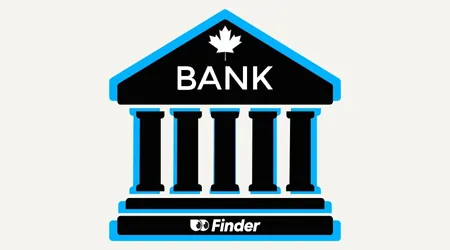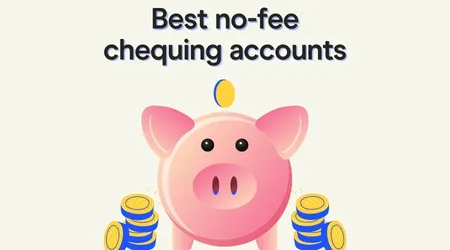
Banking statistics and trends in Canada for 2025
Explore key banking statistics and figures from the Finder: Consumer Sentiment Survey January 2025.
Read more…The rise of online and mobile banking has made it easier to perform a wide range of day-to-day banking tasks—including depositing cheques. Most banks now let you deposit cheques into your account using mobile banking apps, a feature commonly known as mobile cheque deposit.
Keep reading to find out how a mobile cheque deposit works and which banks offer this feature.
| Bank | Funds availability | Deposit limit | Example account with mobile deposit | |
|---|---|---|---|---|
Scotiabank | Instantly or up to 5 business days | $500,000 | Preferred Package:Go to site | |
EQ Bank | Up to 5 - 8 business days | $100,000 | Personal Account:Go to site | |
BMO | Instantly or up to 4 - 8 business days | Varies | Performance Chequing:Go to site | |
Coast Capital Savings | Instantly or up to 4 business days | Not specified | Free Chequing, Free Debit, and More Account:Go to site | |
Simplii Financial | Instantly or up to 5 business days | Varies | No Fee Chequing Account: | |
RBC | Instantly (if deposited before 6PM on business days) or up to 5 business days | $500,000 | Signature No Limit Banking: | |
TD | Instantly or up to 6 business days | Varies | Unlimited Chequing Account: | |
CIBC | Instantly or up to 4 business days | $250,000 | Smart Account: | |
National Bank | Instantly or up to 4 - 8 business days | $50,000 per month | The Minimalist Chequing Account: | |
Tangerine | Instantly or up to 5 business days | Varies | No-Fee Daily Chequing Account: | |
Alterna Bank | Instantly or up to 5 business days | No Limit | No-Fee eChequing Account: |
Some Canadian banks and financial institutions don’t allow you to deposit cheques through their mobile apps. Mobile cheque deposit is not available from:
Mobile deposit is a feature of most mobile banking apps. It allows you to deposit a cheque into your bank account through the app—all you have to do is endorse the cheque and then upload photos of its front and back.
The main benefit of mobile cheque deposit is that it saves time. Rather than visiting a branch or ATM, you can deposit cheques at home or on the go any time it’s convenient for you.
Mobile deposits can also be used for more than just cheque deposits. Depending on the bank, you may also be able to use this feature to deposit:
It’s easy to deposit a cheque via mobile banking. While the exact process will vary depending on your bank, here’s a general guide to the steps you need to follow:
Yes, you need to sign the back of a cheque before depositing it via mobile banking app. Here’s how to endorse a cheque for mobile deposit.
On the back of the cheque, you will need to:
Then follow the instructions in your mobile banking app to make a cheque deposit.
The time it takes for funds to clear depends on your bank’s hold policy. While the amount you deposit may be credited to your account the same day, it could be between four and eight business days before you can access the money.
Your access to funds can also depend on the amount deposited.
For example, by law in Canada, the first $100 of a mobile cheque deposit must be available by the business day after the deposit was made. If the cheque is worth less than $100, the bank must make the full amount available to you by then.
Check your bank’s hold period to find out how much longer you’ll have to wait to access your deposit.
According to the Government of Canada, deliberately depositing a cheque more than once is fraud.
But accidents do happen, so if you’ve mistakenly mobile deposited a cheque twice, contact your bank immediately to let a representative know.
Once you mobile deposit a cheque, you should mark the front of it to indicate that it has already been deposited. You can write Deposited on the front of the cheque. This should help you avoid any unfortunate mix-ups in the future.
Yes, you can mobile deposit a certified cheque with some banks. Check with your financial institution to find out whether certified cheques are accepted.
Yes, it’s possible to mobile deposit bank drafts. However, the list of items you can deposit via your mobile banking app varies from one financial institution to another, so you’ll need to check with your bank.
Yes, it’s safe to deposit cheques through your bank’s mobile banking app. Mobile banking apps use encryption to protect your financial and personal information. So, if you already perform a wide range of other day-to-day banking tasks via your smartphone, you’ll know what sort of security to expect for mobile cheque deposits.
You’ll need to make sure that you only ever use your financial institution’s official mobile banking app. You can download legitimate mobile banking apps from the Google Play Store and Apple App Store.
If you unknowingly submit a fake cheque into your bank account via mobile deposit—if you fall victim to a scam, for example—a few things will likely happen.
Once your bank detects that the cheque is fake, you’ll typically need to pay back the cheque amount. You might also be hit with a processing fee from your bank, and covering the cost of the bad cheque could overdraw your account and result in overdraft fees.
Then there are the flow-on effects to consider. Suspicious account activity can lead to your bank freezing your account. If the bounced cheque means you have insufficient funds to cover future bills, your credit score could take a hit.
That’s why it’s important to know how to spot a fraudulent cheque. The Canadian Bankers Association recommends looking at the back of the cheque for details like built-in security features (including watermarks) and making sure you trust the person you’re dealing with when accepting a cheque as payment.
Mobile deposits help make day-to-day banking quicker and easier but can also be a target for scams. Here are some common mobile cheque deposit scams to keep an eye out for.
If you’re selling an item online, a scammer might send you a fake cheque for more than the purchase price. They’ll ask you to deposit the cheque into your account and refund them the excess amount, but then they’ll disappear with your money before the cheque bounces.
That’s why you should be wary of any buyer who makes an offer that seems too good to be true, and know how to recognize the signs that could indicate a fake cheque.
With this scam, scammers post ads for non-existent work-from-home jobs. Apply for the job, and you’ll be asked to deposit business cheques into your personal account and then send some of the funds to the scammer. The cheque later turns out to be fake, but the scammer has long since disappeared with your money.
To avoid this scam, watch out for job offers that sound too good to be true, and don’t accept a mobile deposit from a stranger.
In this scenario, you may be offered a fake loan and tricked into depositing a fake cheque into your bank account. Alternatively, the scammer may request your mobile banking login details, so they can mobile deposit the cheque into your account.
Be sure to research any lender thoroughly to make sure they’re legitimate. These days, most lenders can send you loan funds by e-Transfer or direct deposit.
Scammers create fake profiles on legitimate dating apps and websites to form a relationship with you. Once they’ve established a bond, they’ll spin some sort of sob story in which they require financial assistance and you deposit a fake cheque into your account to send them funds.
You’ll need to check with your financial institution to find out which cheques are eligible for mobile deposit. However, you’ll typically be able to deposit cheques that are made out to you or someone you share a joint account with as well as cheques issued by any level of government in Canada.
If you deposit a cheque at a federally regulated financial institution, there are limits to the hold period on the funds. For mobile cheque deposits, the maximum hold period is:
However, with mobile deposits, federally regulated financial institutions must make the first $100 available to you by the next business day.
Here are a few positive and negative points to consider about making a mobile cheque deposit in Canada:
Mobile cheque deposit is a simple and convenient way to deposit cheques into your bank account. It’s widely available from most banks and credit unions, and it saves you the hassle of visiting a branch or ATM. Log in to your mobile banking app to find out how to deposit a cheque using your smartphone.

Explore key banking statistics and figures from the Finder: Consumer Sentiment Survey January 2025.
Read more…
Compare the features of 8 of the best no-fee chequing accounts in Canada, and find out how to avoid transaction fees.
Read more…
Earn cash, rewards points, bonus interest rates and more with these new bank account offers and promotions.
Read more…
Learn about the different types of bank accounts for your teenager and how to choose the right one.
Read more…
Compare chequing accounts and learn about our top picks. Compare different features and see which one is right for you.
Read more…
Compare and open a bank account online in Canada in as little as 5 minutes. Learn what you need to apply and how to get started today.
Read more…Your step-by-step guide to depositing a cheque online using mobile cheque deposit.
Find out which banks offer instantly available funds with mobile cheque deposit in Canada.
Your guide to alternatives to Cash App in Canada, including how each one works.
Your guide to the best apps and accounts like SoFi in Canada.
A detailed look at seven Monzo app alternatives in Canada, including the pros and cons of each.
These Chime alternatives offer no-fee online and mobile banking along with a host of other perks.
Whether you’re looking for a digital-only bank, a virtual bank account or a bank account you can access online, we help you find and compare the best online banks in Canada.
It’s easy to open a digital bank account with government-issued ID, and you might not need additional proof of residency.
Looking for Revolut alternatives in Canada? These Canadian banks and financial apps may be just what you need.
We compare six Starling Bank Canada alternatives to help you find the right digital bank for you.